Why isn't there just one pin (like in French type E)?
Asked
Active
Viewed 141 times
-1
-
Redundancy? Clamping force? – PlasmaHH Mar 22 '18 at 17:44
-
Why not just use type F socket and avoid redundancy? – user3711671 Mar 22 '18 at 17:53
-
Why avoid redundancy? Redundancy in protection circuits is good. – Tom Carpenter Mar 22 '18 at 18:06
-
@user3711671 Could you please give us more context for this question? What are you building? What are you trying to accomplish? What had prompted this question of yours? – Nick Alexeev Mar 22 '18 at 19:04
-
ask the person that designed it – jsotola Mar 22 '18 at 19:15
-
Why?If there's a reason then there's no need to ask the designers. – user3711671 Mar 22 '18 at 19:21
-
@user3711671 You are not providing sufficient context. Question closed. – Nick Alexeev Mar 24 '18 at 00:55
2 Answers
2
Figure 1. Schuko Type F socket. Source: International Config.
From a mechanical point of view the double earth contact in the socket balances the forces applied during insertion and removal. Without it the one spring would push the plastic plug against the plastic socket on the other side.
Most electrical socket connectors pinch the pins. This arrangement does the same thing - just with a very wide socket.
Transistor
- 168,990
- 12
- 186
- 385
-
"Without it the one spring would push the plastic plug against the plastic socket on the other side." Yes, why is that a problem?Look at the left and right sides, plastic part of the plug goes into the plastic part of the socket.Type E seems to be better, don't you think? – user3711671 Mar 22 '18 at 19:25
-
"*Yes, why is that a problem?*". Friction and wear. "*Type E seems to be better, don't you think?*" I don't know. You provided pictures for neither (bad) and I had to look up the Type F. – Transistor Mar 22 '18 at 19:29
0
It doesn't. It has two side contacts that make the ground connection.
It is designed to be inserted either of two ways. Since the ground connection is not on the axis of symmetry, there must be two of them.
In contrast, the type E can only be inserted one way to begin with, because it is not symmetric.
Dave Tweed
- 168,369
- 17
- 228
- 393
-
Why two?Wouldn't the appliance and earth be enough to close the circuit (only 1 earth pin)?There should still be a difference in the potentials.How does type E work then? – user3711671 Mar 22 '18 at 18:22
